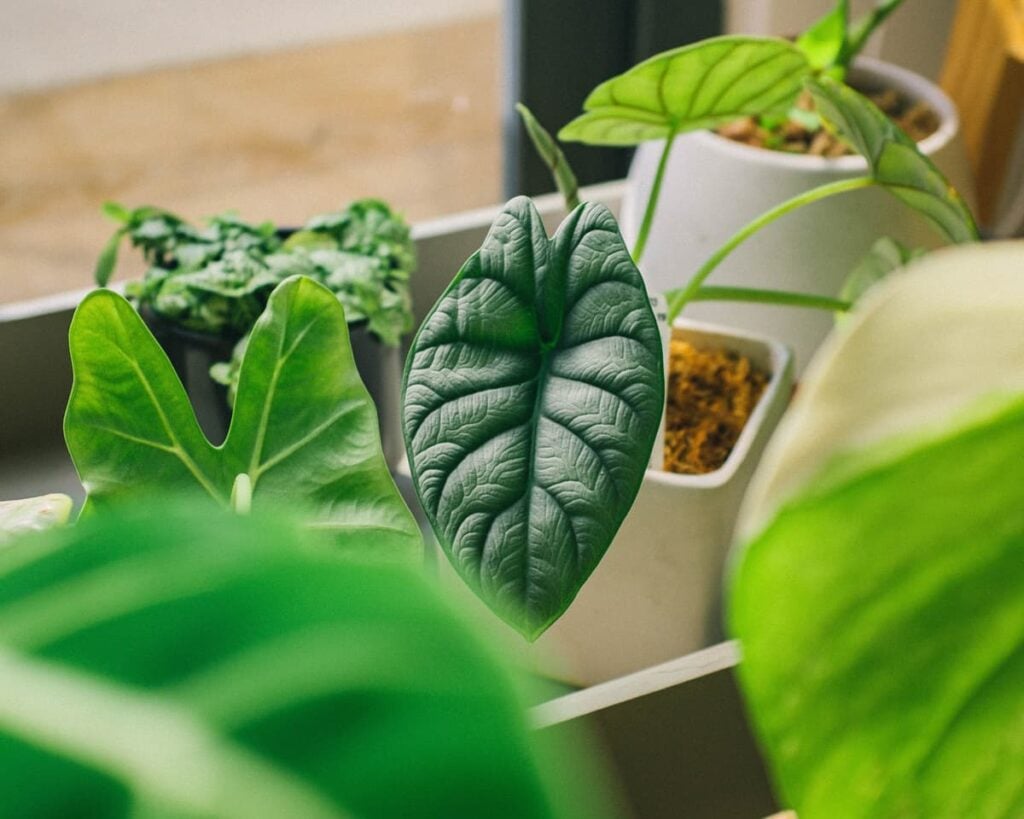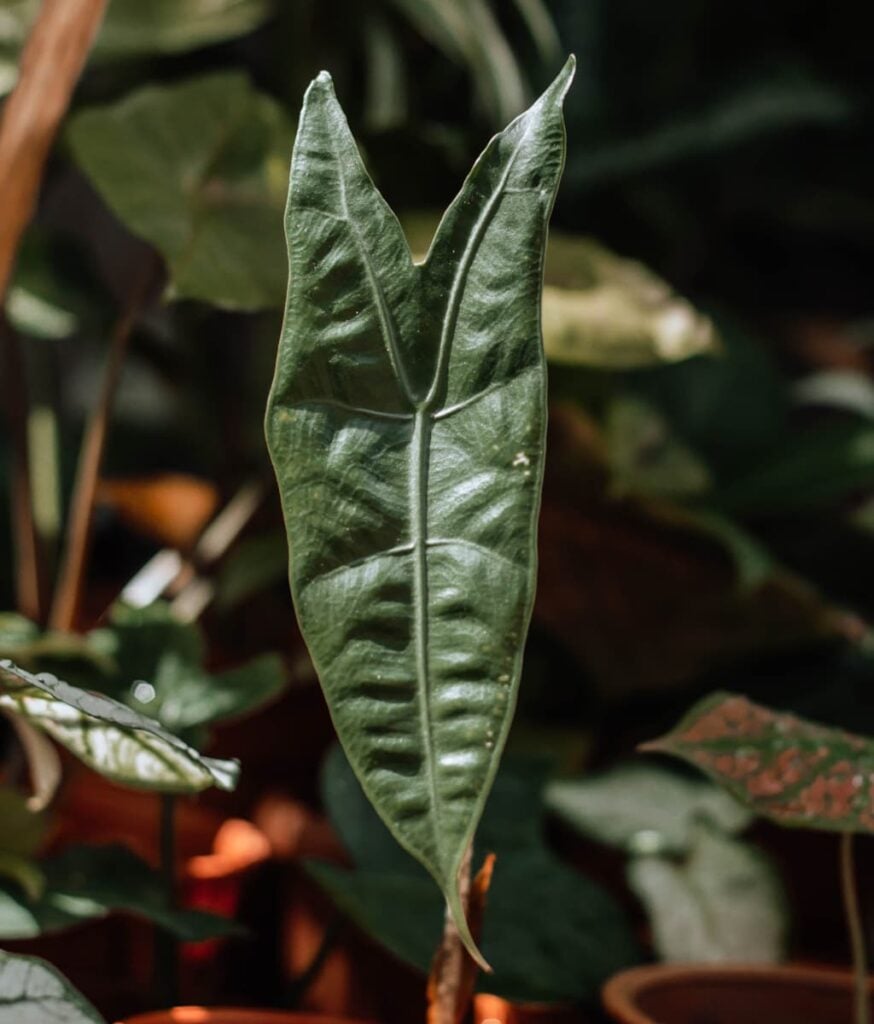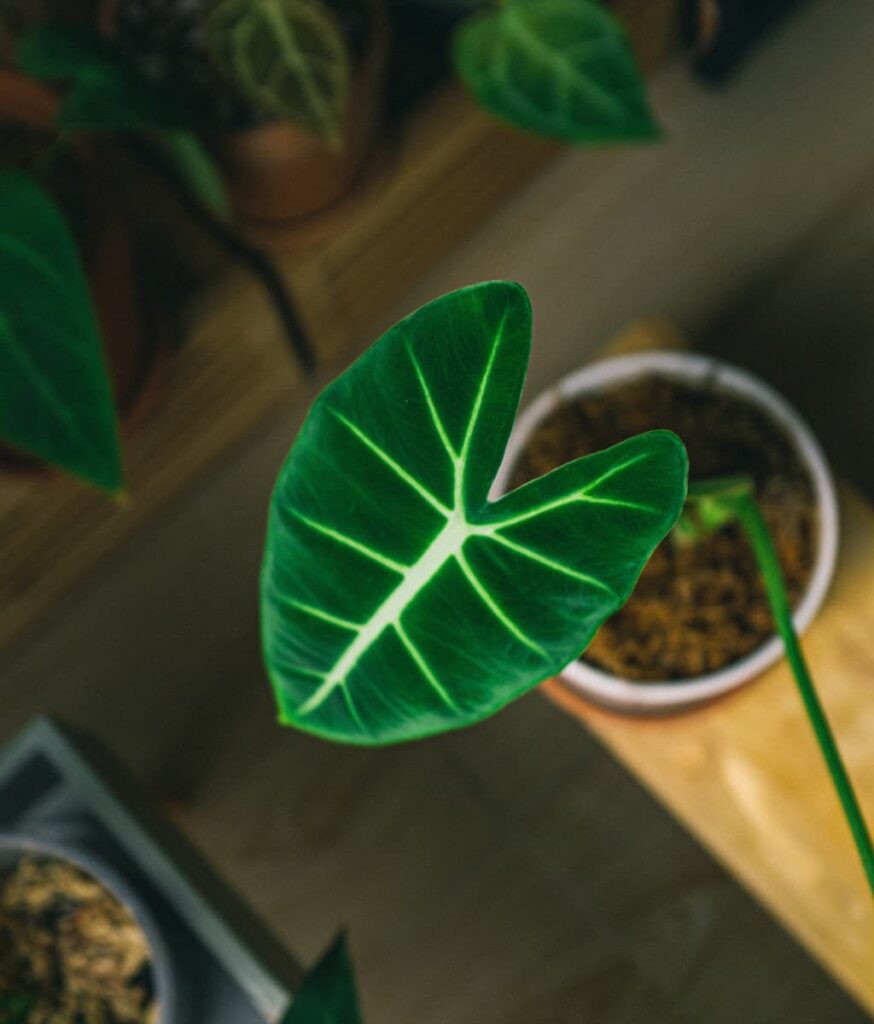Everything You Need to Know about Alocasia Care

These stunning, veined leaves of Alocasia come in red, bronze, blue-green, and purple. If you are searching for a dramatic, very different looking plant that can be as small as 6 inch or as tall as a tree, an Alocasia plant is a great choice. Check out our Alocasia collection.
Alocasia Care
Alocasia care is very easy as it doesn’t require extra care and attention. Alocasia plants are considered poisonous and should be kept away from pets and children. There are around 80 species of this distinctly veined stunner native to subtropical Asia and eastern Australia, and some specimens boast leaves that can grow up to almost three feet long!
Light
Alocasia plant requires very bright indirect light but no direct sun. Sometimes it needs vary from shade to full sunlight, depending on the variety. The leaf colour tends to be better among plants that grow best with more light.
Soil
Plant it in loose, well-drained potting mix or a crumbly loamy soil that contains a good amount of peat moss. Allow the top 2-3 inch of soil to dry out before watering. Try to keep the soil evenly moist. Over-watering, wet leaves, soggy soil makes an Alocasia plant susceptible to a variety of serious fungal infections. Check the soil frequently until you are sure of the plant’s watering needs. If the soil seems a little heavy, add some builder’s sand or perlite.
Water
Keep Alocasia plants moist all year; they are water-loving plants. There is a fine line with these plants. You want to keep the soil moist, but not soggy. Alocasia plants require less water during the winter when it’s dormant.

Temperature and Humidity
Alocasias will suffer below 16 degrees Celsius. Some varieties will die back during colder weather and re-sprout from the rhizome. They require and thrive in very humid environments. To raise the humidity around your plant, place it on a tray filled with pebbles and then add water until it rises to just below the bottom of the pot. Keep them away from cold drafts from windows, doors, and air conditioning. During warm summer months, an Alocasia can produce a new leaf every week and each new leaf may be twice the size of the previous leaf.
Fertilizer
Alocasias can be heavy feeders, especially large specimens. Feed with liquid fertilizer during the growing season or frequent, small applications of granule fertilizer.

Common Problems
- Symptom: Top heavy leaves on their slender stems
Cause: The plant having too little light, too much or too little water in the soil, or not enough nutrients. The plant will right itself over time but you also can stake the stems while it recovers. - Symptom: Dark brown or black spots on the leaves, surrounded by a yellowish rim
Cause: Under watered or leaves are consistently wet
As you have read above the Alocasia care is not that hard and if you live in the humid parts of the country, you won’t have to do much for Alocasia care. But if you are in much hotter or cooler place, read this Alocasia care properly and get accustomed to it.
Alocasia care reference: TheSpruce, Houseplant411 , GreeneryUnlimited
